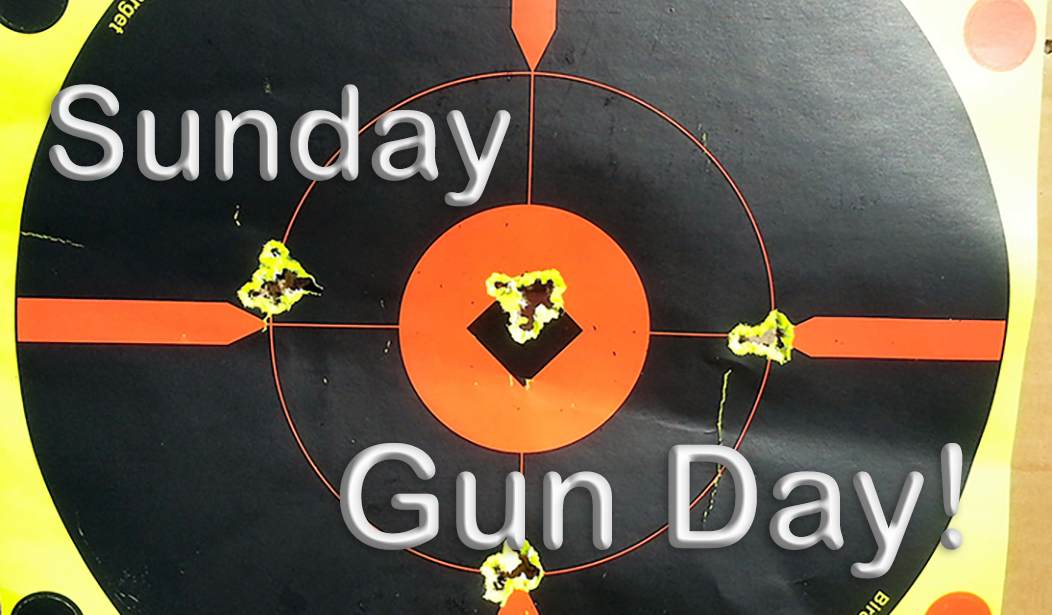As General Patton described it, the famous M1 rifle, the Garand, may well have been the finest battle implement ever designed and built, at least up to that point. But it was a long, heavy thing, weighing in at 9 ½ pounds empty. The equally famous Thompson submachine gun was shorter but similarly heavy.
In the late 1930s, the United States Army began to cast about for a lighter shoulder arm, a carbine, firing a lighter round than the M1. The new arm would benefit support troops: Mortarmen, assistant machine gunners, and so forth. Specifications were developed, and the result was the M1 Carbine and its .30 carbine straight-walled cartridge.
The Weapons Gap
When the development of the carbine began, there was a significant gap between arms issued to U.S. troops. There were, of course, the two primary battle rifles, those being not only the M1 but also the 1903 Springfield bolt gun still in use. The only personal weapon smaller than those long, heavy pieces was the 1911 pistol (along with a few commercial revolvers issued to people like aircrew.) The Thompson submachine gun was already in existence, but it was a bit, heavy piece, about the same weight as the M1 rifle.
See Related: Sunday Gun Day Vol. II Ep. VIII - The Famous Thompson Submachine Gun
An intermediate was needed. The Army set forth requirements; the new intermediate would be a carbine, weighing no more than five pounds, with an effective range of 300 yards. A cartridge was already in play; Winchester, while involved in other development projects, had already developed the .30 Carbine cartridge, which was essentially a rimless version of the old .32 Winchester Self-Loading round. This cartridge was something of a pipsqueak, tossing a 110-grain round-nose pill at 1,990 feet per second for an anemic 967 foot-pounds of energy at the muzzle.
In time Winchester’s other attempt at a martial rifle fell apart; their work on the Winchester G30 rifle came to no good as the designer, Ed Browning, half-brother of the Da Vinci of Guns, had passed away. Winchester then put together a team to produce a carbine to the Army’s specifications, that team consisted of David Marshall “Carbine” Williams, who had designed a short-stroke gas-piston semi-automatic action, ironically while serving a prison sentence. The balance of the team included William Roemer, Fred Humeston, Cliff Warner, Edwin Pugsley, and several other unnamed Winchester engineers. Despite the role attributed to Williams in the 1952 movie “Carbine Williams,” his main role was in the development of the action; he had little to do with the rest of the weapon’s design.
The final result? A slick little carbine, weighing in at a tad over spec at 5.2 pounds. The M1 carbine was issued with a fixed stock to ground troops and with a folding wire stock to paratroopers, with a 15 or 30-round magazine, an aperture rear sight paired with a post front, firing the already-developed (and underpowered) .30 carbine round.
The M1 Carbine
 The carbine became the most produced small arm for the United States armed forces in World War 2. Over 6 million were made, compared to 5.4 million M1 battle rifles and a little over a million Thompson submachine guns. The manufacture was undertaken by Winchester along with a host of contract manufacturers including General Motors, IBM, The Underwood Typewriter company, and the Rock-Ola jukebox manufactory. The carbine, while being light and handy, was also economical for the War Department, costing only a little over half of the price for a full-size M1 rifle.
The carbine became the most produced small arm for the United States armed forces in World War 2. Over 6 million were made, compared to 5.4 million M1 battle rifles and a little over a million Thompson submachine guns. The manufacture was undertaken by Winchester along with a host of contract manufacturers including General Motors, IBM, The Underwood Typewriter company, and the Rock-Ola jukebox manufactory. The carbine, while being light and handy, was also economical for the War Department, costing only a little over half of the price for a full-size M1 rifle.
The carbine was not intended to be a primary infantry weapon, but as an intermediate between the full-size battle rifle and a sidearm, leaving people like company-grade officers, senior NCOs, and support troops with a weapon that had a greater range of a pistol while being more portable than the battle rifle. In that, the M1 Carbine did very well indeed, and the troops liked the standard 15-round magazine and the lightweight cartridge, which enabled them to carry more ammo. And if there’s anything combat troops love, it’s ammo and plenty of it.
The carbine was first issued in Europe, although later in the war they were also issued to American servicemen who liked the short, handy arm for island jungle fighting. By late 1943, though, reports had begun to circulate about the weak .30 Carbine round's lack of stopping power compared to the Garand’s .30-06 round or even, at short range, the Thompson’s .45ACP.
See Related: Sunday Gun Day Vol. II Ep. VI - Patton's Pistols
The M2/M3 Select-Fire
In late 1944, captured German weapons like the Sturmgewehr 44 assault rifle prompted the development of a selective-fire M1 carbine. The resulting M2 Carbine simply added the select-fire function to the M1 Carbine, along with an expanded 30-round magazine. The full-auto setting had a cyclic rate of 750 rounds per minute, and some M1 carbines were converted to M2 trim while others were newly manufactured. The M2 saw limited use in World War 2, but examples served with US Forces as late as the Vietnam conflict.
A few hundred M2 carbines were fitted with big, heavy awkward infrared night-vision scopes (remember that this was in the day when electronic devices were dependent on vacuum tubes) and designated the M3 carbine; this development was not entirely successful, although improvements on the infrared sight made the carbine more practical, and it was still in use, like the M2, as late as the Vietnam conflict.
In Today’s World
You can still get a new M1 carbine today! While surplus examples abound, originals are increasingly vanishing into collections, museums, and so on. But the Thompson Auto-Ordnance company, the same company that manufactures current, 16” barreled, semi-auto versions of the Thompson submachine gun for civilian sale, also manufactures new M1 carbines. These are very like the originals, made to the original specs by Kahr Arms in Pennsylvania. Like the originals, they have a Parkerized metal finish and walnut stocks, but unlike the originals, it’s a safe bet that the tolerances and metallurgy are improved over the originals.
Another interesting twist on the M1 carbine was the development of the .22 Spitfire cartridge, a wildcat that necked the .30 Carbine round down to take a 40-grain .22 caliber bullet. The new round, developed by one Melvin Johnson, produced ballistics rather better than the .22 Hornet, launching the 40-grain slug and 3,000 fps for 795 ft/lbs of muzzle energy. A few new commercial M1 carbines made by the now-defunct Johnson Guns company (run by the aforementioned Melvin Johnson) were chambered in the round, but ammo is not now commercially available, and I have never handled or fired one of these pieces or, for that matter, I’ve never even seen one of the .22 Spitfire rounds.
The M1 Carbine was a great example of how a military procurement project should work: A couple of years from concept to being in the troops’ hands. The carbine was a great piece, aside from its anemic cartridge – if they had chambered it for something like the .351 Winchester Self-Loading it may have been much more effective – but the arm retains its historic status as one of the great individual weapons of the World War 2 period and beyond.














